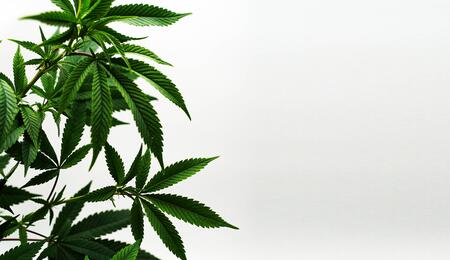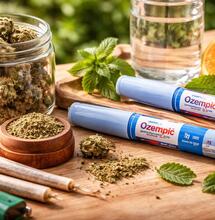The Value of Water: pH, EC & PPM

Understanding the water that feeds your plants is as important as knowing what foods to eat and how they act on your own body.
Water, H2O, is the basis for life on this planet, and without its existence we would cease to be. Not only do plants need water to absorb nutrients but they themselves weigh, much like the human body, 2/3 water. Understanding the water that feeds your plants is as important as knowing what foods to eat and how they act on your own body. Water content varies, so here are some simple guidelines to better understand its value.
pH Scale
The pH Scale is a measurement of acidity and alkalinity of water. The term pH stands for the potential (p) of the hydrogen ion (H+) in water. At a pH of 7.0, there is an equal balance of hydrogen (H+) ions and hydroxyl (OH-) ions. The simplest method to get a precise measurement is by using an electronic pH meter.
Imagine pH as being how hot or cold your food is. If the food is too hot, you get heartburn; too cold and you get brain freeze. In the same way, finding the right balance is vital for your plant's ability to absorb its food and therefore, to its good health. Throughout the scale, (1 to 14), are conditions that will affect the ability of the plant to absorb the various nutrients you feed it. Constant monitoring of pH levels is vital to prevent damage to the roots and to the plant altogether.
Soil, Hydro-, Aero-
Using soil as a medium will act as a buffer, which can reduce damage from possible mistakes. This means that using soil can be a lot more forgiving for first-time growers; the down side being that any damage done is also a lot harder to remedy. Mixing distilled water with a sample of your soil can help determine what the pH of your soil is, to avoid this kind of mishap. Hydro- systems work by directly feeding the plant everything it needs with mediums that are more inert than soil, thereby reducing the buffer zone. Using cocos or rock-wool maintains a small buffer with its own pH. This means that the pH of the nutrient solution should be adjusted to compensate. Aeroponics takes the feeding process one step further by using no medium at all, resulting in the absence of any buffer. Therefore, the pH of the water used does not require compensation, given the more direct nutrient input. The pH of food solutions is not always the pH at the roots; check the table for compensation values for respective mediums. Remember: all pH, EC and PPM (parts per million) values are temperature- and time dependent.
Grow MediumRequired pH RangepH of Sample from
Medium
Compensation pH
Value for Food
Soil5.8 -6.2>6.2
5.8-6.2
<5.85.8
6.0
6.2
Coco5.5-6.2>6.2
5.5-6.2
<5.55.5
5.8
6.2
Rock Wool, Clay5.2-6.2>6.2
5.5-6.2
5.2-5.5
<5.25.2
5.5
5.8
6.2
Water is essentially the primary food delivery system via a process called osmosis. Through the roots, nutrient levels balance between water in the plant and water around the roots. The plant will absorb nutrients from the outside water, while discharging waste products (salts). The logic of don't shit where you eat applies to plants as much as to humans, which is why we need methods of determining how many nutrients already are present in the water we use.
EC and PPM
Electrical Conductivity (EC) and PPM (Parts Per Million; also referred to as TDC, or Total Dissolved Solids) are two scales with which we can measure the presence of ionic salts in the fluid. Pure H2O water does not actually conduct electricity efficiently. However, most water found in pools and taps contains ions (H+, Cl-) that do. The more ions in the water, the better it is at conducting electricity. This is the relationship we use to measure the amount of nutrients (salts) present in the water. The diets for plants are as varied as there are diets for humans. Certain plants might require heavy meals to help provide all the nutrients for growth; whereas other plants will get clogged up with too much food at once and require lighter meals. Optimum EC values change with different foods as well as plants.
Feeding the Plants
Soil
Growers using soil will generally be more concerned with their pH than with their EC/PPM, though having an EC meter is never a bad investment. Generally speaking, soil can be monitored by using pH alone and keeping within the advised range. Specific nutrients are better absorbed at different pH values. The graph displays the best pH value to maximize the absorption of nutrients. For example, while nitrogen (N) is best absorbed from pH 6.0, phosphorus (P) and potassium (K) peak from about 6.25 onwards. This indicates a necessary change in pH when going from vegetative cycle to the flowering cycle. Quick tip: when mixing a nutrient solution, always prepare the formula first, before measuring and adjusting the pH.
Hydro-, Aero-
Since hydro- and aero- mediums reduce the buffer, emphasis should be made on the EC and PPM of the water, as well as pH. Like pH, absorption of individual nutrients is optimized at different levels of conductivity. These media employ direct feeding, meaning that extreme care must be taken to give the plant enough food so it doesn't starve, but not enough to restrict the roots absorption with salts. With reservoir/re-circulatory water systems, cleansing methods such as reverse osmosis can greatly improve the quality of water. By filtering out excess salt build-up, growers can maintain the quality of their water, and encourage nutrient-absorption, to provide optimum grow results. Basically, ensuring water quality takes a bit of effort but is essential to a successful grow - therefore well worth the effort! Any comments/questions?
Feel free to get in touch with us at the Cannabis College in Amsterdam: The Cannabis College
Oudezijds Achterburgwal 124 www.cannabiscollege.com



